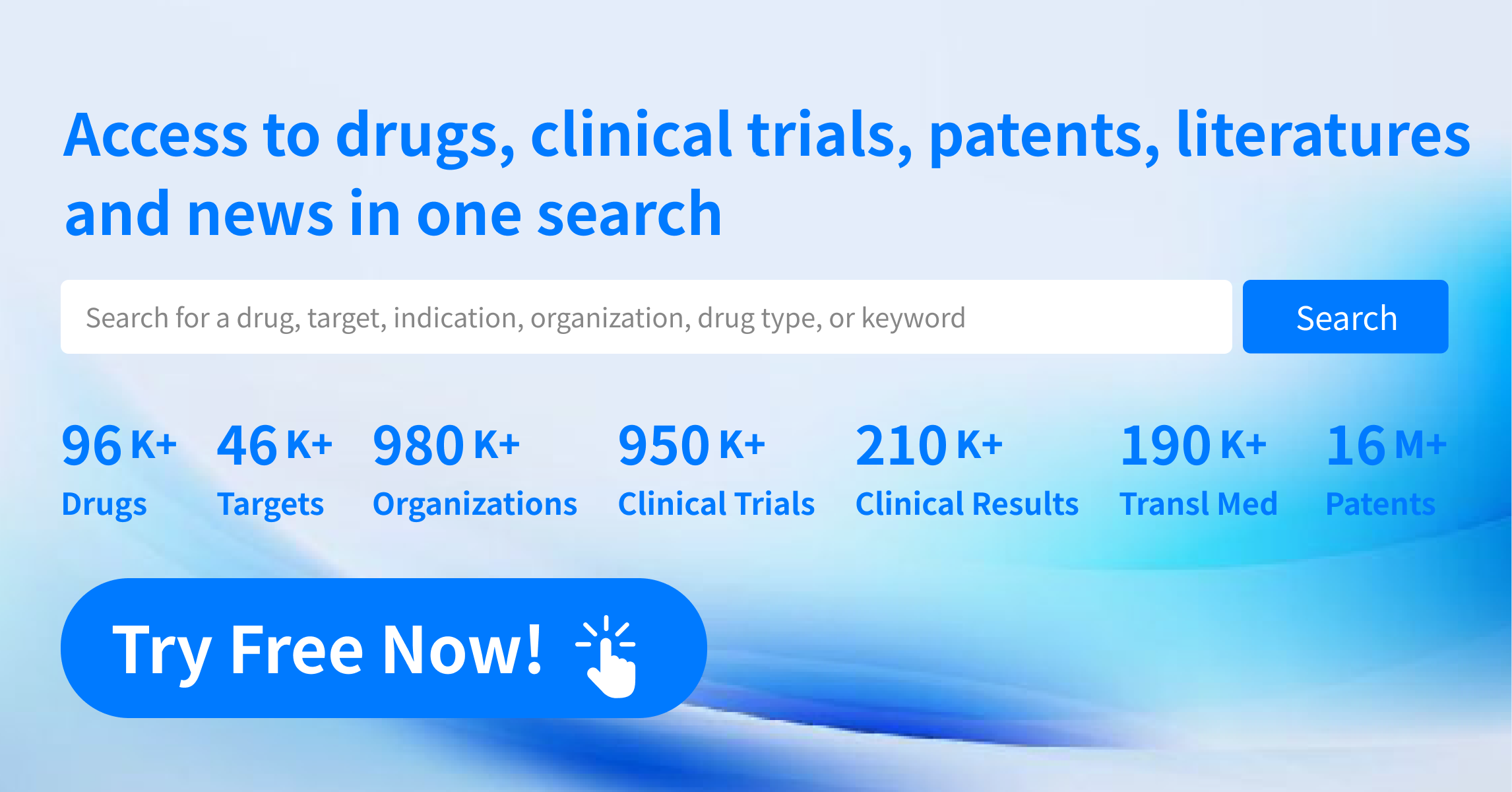Hengrui Pharmaceutical's Anti-PD-L1/TGF-βRII Bispecific Fusion Protein Application Accepted
On September 19, 2024, the National Medical Products Administration (NMPA) accepted Hengrui Pharmaceutical's marketing authorization application for the Class 1 new drug Retlirafusp-α Injection (SHR-1701). The application seeks approval for its use in combination with Fluorouracil and platinum-based drugs for the first-line treatment of locally advanced unresectable, recurrent, or metastatic gastric and gastroesophageal junction adenocarcinoma.
About Retlirafusp-α
Retlirafusp-α is a bispecific fusion protein targeting both PD-L1 and TGF-βRII. It works by promoting the activation of effector T cells and effectively improving immunomodulation in the tumor microenvironment, thereby enhancing the immune system's ability to kill tumor cells. In November 2020, Hengrui reached an agreement with South Korea's DONG-A ST Co., Ltd. (hereinafter "Dong-A"), licensing the SHR-1701 project to Dong-A for a total transaction amount of $139.27 million, while also securing a share of the sales revenue. Dong-A holds exclusive rights for clinical development, manufacturing, and marketing of SHR-1701 in South Korea and is authorized to develop and market SHR-1701 for all human diseases. Recently, Hengrui presented the Phase 3 clinical trial data of SHR-1701 combined with chemotherapy versus placebo combined with chemotherapy for advanced HER2-negative gastric or gastroesophageal junction adenocarcinoma (G/GEJA) as a first-line treatment at the 2024 European Society for Medical Oncology (ESMO) conference. The primary endpoints were overall survival (OS) in PD-L1 CPS≥5 and intention-to-treat (ITT) populations. Secondary endpoints included progression-free survival (PFS), objective response rate (ORR), duration of response (DoR), and safety. Stratification factors included PD-L1 expression (composite positive score CPS≥5 vs. <5), ECOG performance status (0 vs. 1), and peritoneal metastasis (presence vs. absence). The results showed:
·In the PD-L1 CPS≥5 population, the median OS (mOS) was 16.8 months in the SHR-1701 group compared to 10.4 months in the placebo group, achieving statistical significance.
·In the ITT population, the mOS was 15.8 months for the SHR-1701 group versus 11.2 months for the placebo group, also achieving statistical significance.
·In the PD-L1 CPS≥5 population, the median PFS (mPFS) was 7.6 months for the SHR-1701 group versus 5.5 months for the placebo group. The confirmed ORR was 56.5% for the SHR-1701 group compared to 32.7% for the placebo group, a difference of 23.8%. The DoR was 10.2 months versus 5.1 months, respectively.
·In the ITT population, the mPFS was 7.0 months for the SHR-1701 group compared to 5.5 months for the placebo group. The confirmed ORR was 53.4% for the SHR-1701 group versus 32.8% for the placebo group, a difference of 20.6%. The DoR was 8.5 months versus 5.3 months, respectively.
Beyond gastric cancer, Hengrui is also developing SHR-1701 for indications such as lung cancer, colorectal cancer, and nasopharyngeal carcinoma. An Ib/III phase clinical study for cervical cancer showed that SHR-1701 combined with platinum chemotherapy and BP102 for first-line treatment achieved an ORR of 77.4% and a DCR of 93.5% (compared to an ORR of 68% for the FDA-approved first-line therapy "K drug + chemotherapy ± bevacizumab" for PD-L1 positive recurrent or metastatic cervical cancer), demonstrating its potential to challenge the K drug!
On PD-L1/TGF-βRII Drugs
Transforming Growth Factor-Beta (TGF-β) is known to promote tumor progression by stimulating epithelial-mesenchymal transition within the tumor microenvironment, inducing angiogenesis, activating cancer-associated fibroblasts, and suppressing the immune response. Its role is linked to resistance against PD-(L)1 antibodies. The dual-targeted PD-(L)1/TGF-β therapy can simultaneously block the TGF-β-mediated downstream tumor activation pathways and PD-1-mediated tumor immune escape, achieving a dual anti-tumor effect.
Currently, Hengrui's SHR-1701 is the only PD-(L)1/TGF-β bispecific antibody that has submitted a global marketing application. In addition, Merck’s bintrafusp alfa (M7824) has advanced to Phase III clinical trials, while most other candidates are still in Phase I or Phase I/II stages.
On First-Line Treatment for Gastric Cancer
Gastric cancer is a prevalent solid tumor in China, with limited systemic treatment options for advanced stages, leading to short survival periods and significant unmet clinical needs. In China, current treatments for advanced gastric cancer include chemotherapeutic agents, immune checkpoint inhibitors, and anti-angiogenic drugs. Combination chemotherapy based on fluorouracil and platinum is one of the first-line treatment protocols for advanced gastric cancer, but the long-term survival benefits of chemotherapy alone are limited. Monotherapy with immune checkpoint inhibitors has shown suboptimal efficacy for treating gastric cancer. Consequently, the combination of immune checkpoint inhibitors with chemotherapy has emerged as the new first-line treatment standard for patients with advanced gastric cancer.
On Jiangsu Hengrui Pharmaceuticals
Last month, Jiangsu Hengrui Pharmaceuticals released its financial results for the first half of 2024: the company achieved a revenue of 13.601 billion RMB, representing a year-on-year increase of 21.78%. Notably, revenue from innovative drugs reached 6.612 billion RMB, marking a 33.25% year-on-year growth, with external licensing revenue amounting to 160 million euros. For 2024H1, the net profit attributable to shareholders was 3.432 billion RMB, showing a year-on-year increase of 48.67%; the net profit excluding non-recurring gains and losses was 3.490 billion RMB, up by 55.58% year-on-year.
Since the implementation of centralized procurement in 2021, the company's semi-annual revenue had not surpassed the 2021 peak of 13.3 billion RMB; this outstanding performance indicates that the company has finally overcome the impact of centralized procurement and re-entered a period of high growth.
The company continues to refine its established technology platforms, which encompass chemical pharmaceuticals (including peptides and PROTACs), mono/bispecific antibody drugs, ADC drugs, small nucleic acids, radiopharmaceuticals, multispecific antibodies, and bispecific ADC platforms. Additionally, it has begun to develop new molecular model platforms such as PDC, AOC, DAC, and mRNA, while continuously expanding into structural biology and AI drug development platforms. Currently, 18 innovative drug products and indications are in the NDA stage, with over 10 compounds in the ADC pipeline.
Furthermore, the company's innovative drugs have achieved significant progress in international markets, becoming a secondary growth engine. To date, Jiangsu Hengrui Pharmaceuticals has out-licensed 11 innovative drug projects, with a total overseas contract value of $10.35 billion, including $315 million in upfront payments.
How to obtain the latest research advancements in the field of biopharmaceuticals?
In the Synapse database, you can keep abreast of the latest research and development advances in drugs, targets, indications, organizations, etc., anywhere and anytime, on a daily or weekly basis. Click on the image below to embark on a brand new journey of drug discovery!




